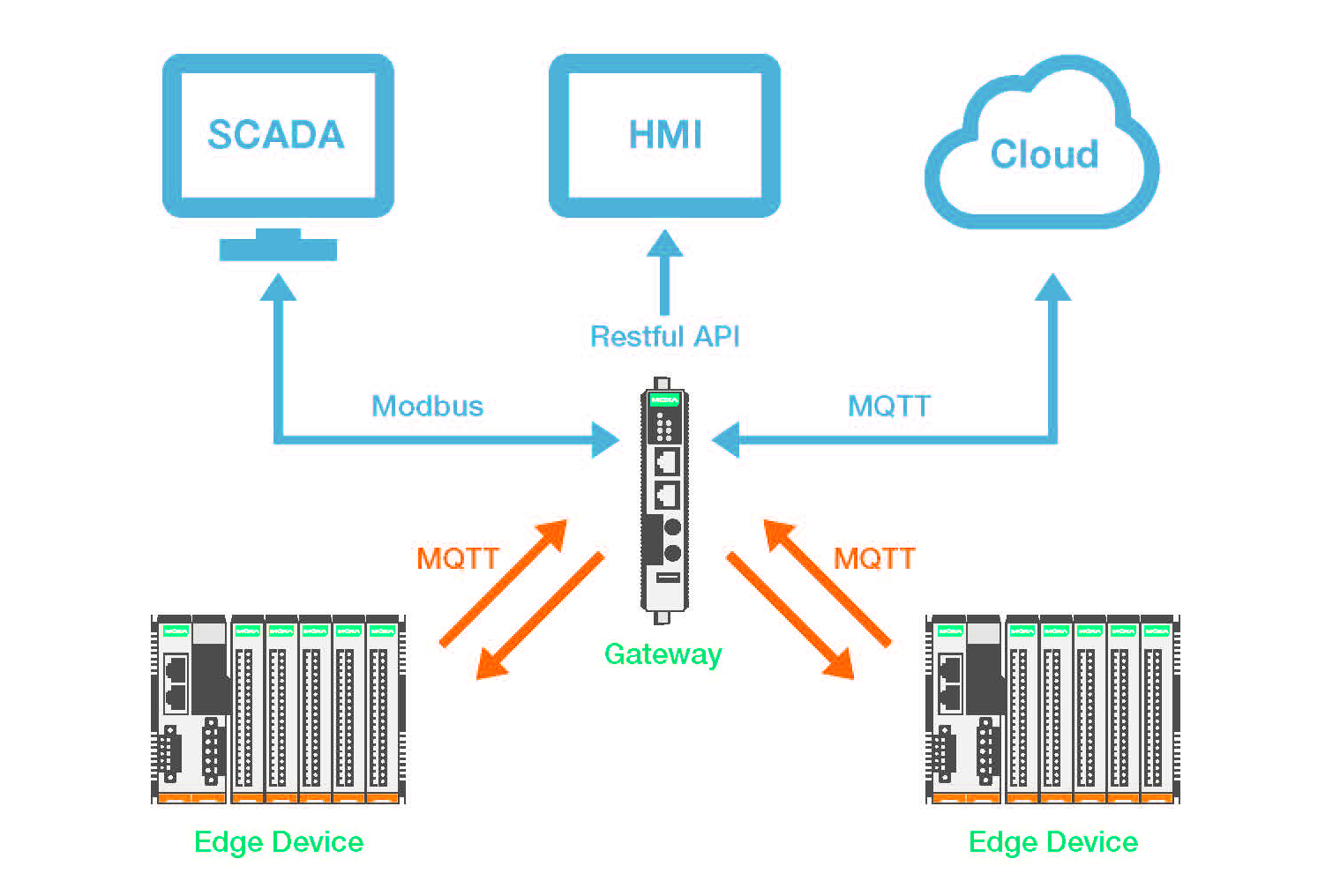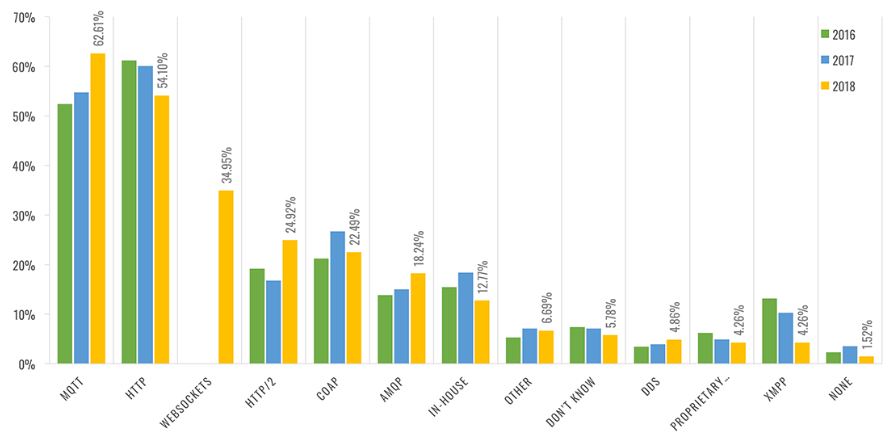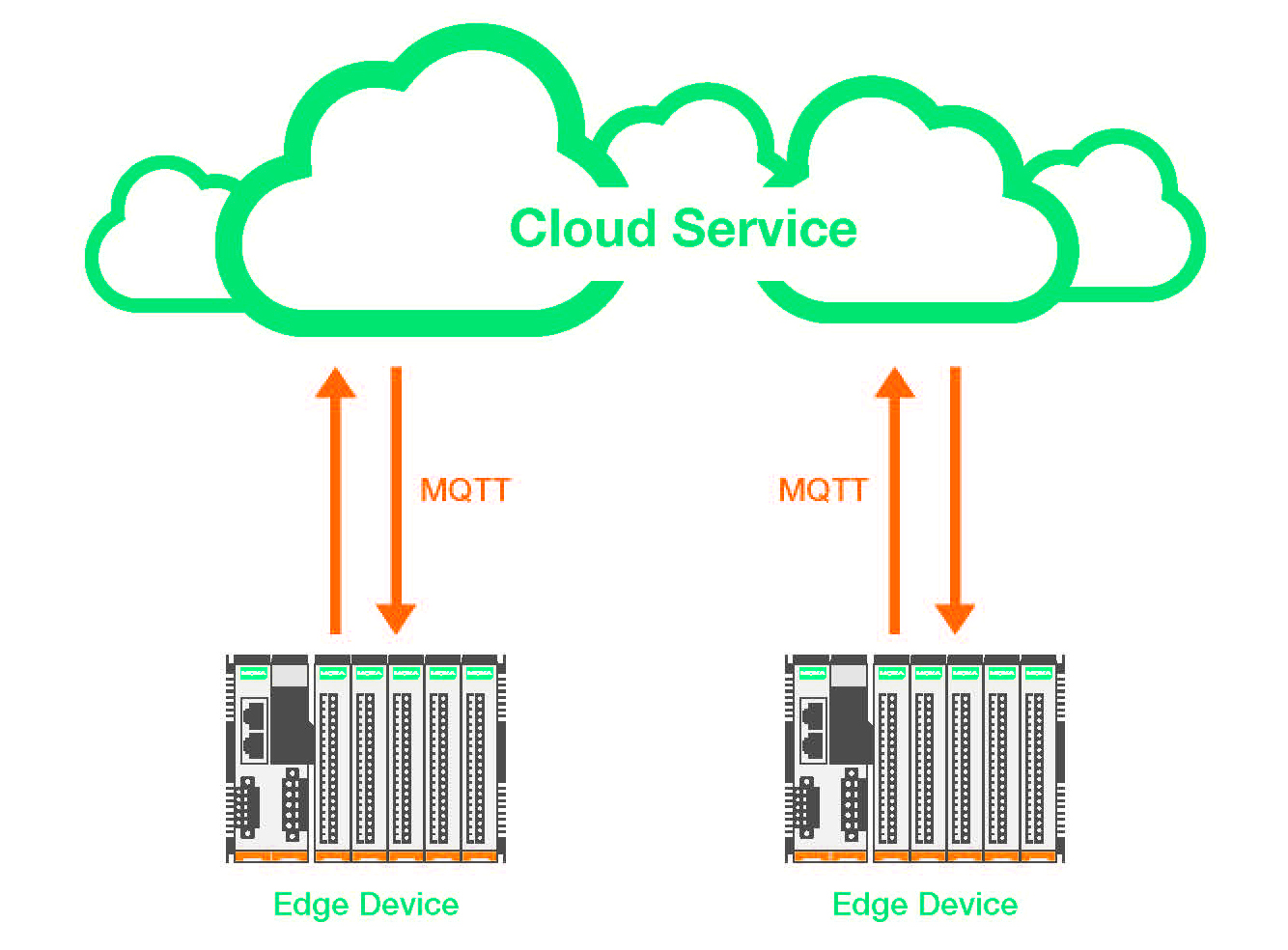MQTT - Enabling Edge-device Connectivity in the IIoT Era
Although the MQTT protocol has been around for nearly three decades, the design of the protocol
makes it ideal for Industrial Internet of Things (IIoT) applications, the latest trend in automation
engineering, MQTT is especially helpful in bringing field-site data to cloud platforms. Read on to
dicover how MQTT can help you overcome the challanges of tranforming a traditional OT
application to an IIoT application.

The MQTT protocol is now the top chice for most IIoT applications. As shown on Fiure1, more than half of IoT developers use MQTT as theircommunication protocol

What is MQTT
MQTT uses a publish-subscribe pattern (see Figure 2) with one broker and serveral publisher and subscriber clients. Publishers send
data to the broker, which distributes the data to subscribers

Publish-subscribe Messaging Pattern
Only the broker needs to be online all the time. The clients only need to get online when a connection is available or when they need to
send or receive data.
Event-drivenMQTT clients only publish data to the broker when certain conditions are met (e.g., a warning signal is triggered). That is, cleint actively
updata data, instead of passively waiting for another device to request the data.
Many-to-many Communication
In factory machine-to-machine (M2M) applications machines at each station share their own process statuses with machine at other
stations. Using MQTT to implement M2M communication improves both efficiency and reliability.
QoS Design
The MQTT protocol uses three QoS levels to prioritize data:QoS 0 (at moste once), QoS 1 (at last once), or QoS 2 (exactly once).
Security
MQTT brokers support account names and passwords to prevent unauthorized clients from connecting to the broker to subscribe to
topics, and TLS encryption for data transmissions greatly minimizes the chance that data will get hackes during transmission.
MQTT Application Architecture
Two major system arcitectures are used:
Connecting Directly to the Cloud
Most oulic cloud services (AWS, Azure, Google Cloud, Alibaba Cloud,etc ) support the MQTT protocol to allow edge devices to
connet directly to the cloud to remain competetive and help shape the future of the industry, cloud services should at least provide the
following benefits: time saving, non-stop service and a rich set of data mining tools.

Connecting to a Local Gateway
Connecting edge devices directly to the cloud has benefits, but you should also be aware of various concerns related to adopting cloud
services for IIoT applications: cost and data security.

The Challenges of Converting to an IIoT Application
You can expect to encounter some or all of the following challanges when transforming a traditional OT application to an IIoT application
Legacy Devices Currently In Use Do Not Support MQTT
For many facillities, engineer will first need to survey and purchase new remote I/O products and gateways that support MQTT. With so
many legacy devices still being used at field sites around the globe, converting a factory to an IIoT-based setup could require a huge
investment
Merging IT With Traditional Automation Applications Is Easier Said Tahn Done
For example OT protocols like Modbus use data packets with small headers and payloads whereas IT protocols use MQTT, RESTful
API and SNMP to collect data. Many ITengineers are not familiar with Modbus.

What is MQTT
MQTT uses a publish-subscribe pattern (see Figure 2) with one broker and serveral publisher and subscriber clients. Publishers send
data to the broker, which distributes the data to subscribers

Publish-subscribe Messaging Pattern
Only the broker needs to be online all the time. The clients only need to get online when a connection is available or when they need to
send or receive data.
Event-drivenMQTT clients only publish data to the broker when certain conditions are met (e.g., a warning signal is triggered). That is, cleint actively
updata data, instead of passively waiting for another device to request the data.
Many-to-many Communication
In factory machine-to-machine (M2M) applications machines at each station share their own process statuses with machine at other
stations. Using MQTT to implement M2M communication improves both efficiency and reliability.
QoS Design
The MQTT protocol uses three QoS levels to prioritize data:QoS 0 (at moste once), QoS 1 (at last once), or QoS 2 (exactly once).
Security
MQTT brokers support account names and passwords to prevent unauthorized clients from connecting to the broker to subscribe to
topics, and TLS encryption for data transmissions greatly minimizes the chance that data will get hackes during transmission.
MQTT Application Architecture
Two major system arcitectures are used:
Connecting Directly to the Cloud
Most oulic cloud services (AWS, Azure, Google Cloud, Alibaba Cloud,etc ) support the MQTT protocol to allow edge devices to
connet directly to the cloud to remain competetive and help shape the future of the industry, cloud services should at least provide the
following benefits: time saving, non-stop service and a rich set of data mining tools.

Connecting to a Local Gateway
Connecting edge devices directly to the cloud has benefits, but you should also be aware of various concerns related to adopting cloud
services for IIoT applications: cost and data security.

The Challenges of Converting to an IIoT Application
You can expect to encounter some or all of the following challanges when transforming a traditional OT application to an IIoT application
Legacy Devices Currently In Use Do Not Support MQTT
For many facillities, engineer will first need to survey and purchase new remote I/O products and gateways that support MQTT. With so
many legacy devices still being used at field sites around the globe, converting a factory to an IIoT-based setup could require a huge
investment
Merging IT With Traditional Automation Applications Is Easier Said Tahn Done
For example OT protocols like Modbus use data packets with small headers and payloads whereas IT protocols use MQTT, RESTful
API and SNMP to collect data. Many ITengineers are not familiar with Modbus.












